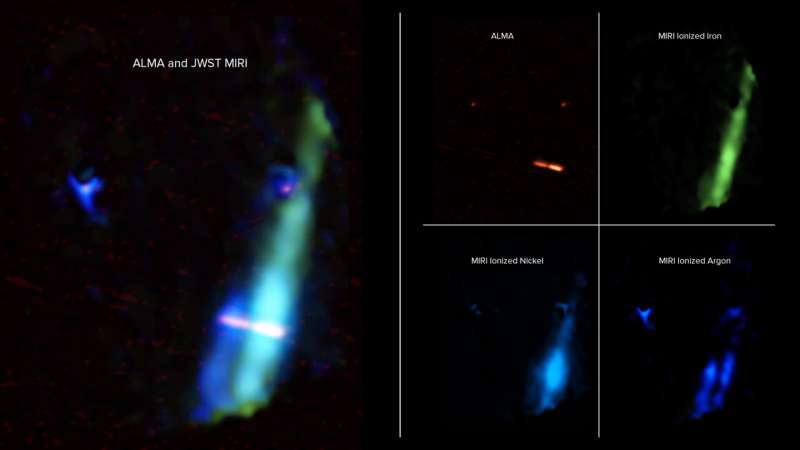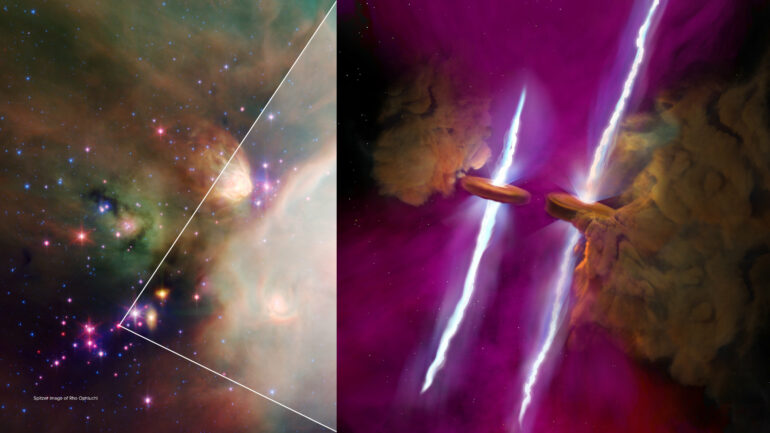Most of the universe is invisible to the human eye. The building blocks of stars are only revealed in wavelengths that are outside of the visible spectrum. Astronomers recently used two very different, and very powerful, telescopes to discover twin disks—and twin parallel jets—erupting from young stars in a multiple star system.
This discovery was unexpected, and unprecedented, given the age, size, and chemical makeup of the stars, disks, and jets. Their location in a known, well-studied part of the universe adds to the thrill.
Observations from the U.S. National Science Foundation’s (NSF) National Radio Astronomy Observatory’s (NRAO) Atacama Large Millimeter/submillimeter Array (ALMA) and NASA’s James Webb Space Telescope’s (JWST) Mid-Infrared Instrument (MIRI) were combined for this research.
ALMA and JWST’s MIRI observe very different parts of the electromagnetic spectrum. Using them together allowed astronomers to discover these twins, hidden in radio and infrared wavelengths in star system WL20, located in the nearby rho Ophiuchi molecular cloud complex, over 400 light years away from the Earth’s solar system.
“What we discovered was absolutely wild,” shares astronomer Mary Barsony, “We’ve known about star system WL20 for a long time. But what caught our attention is that one of the stars in the system appeared much younger than the rest. Using MIRI and ALMA together, we actually saw that this ONE star was TWO stars right next to each other. Each of these stars was surrounded by a disk, and each disk was emitting jets parallel to the other.”

These brightly colored shapes represent astronomical data collected by NRAO’s ALMA and NASA’s JWST telescopes. At left, a composite image overlaps ALMA and JWST data revealing the discs and parallel jets emitting from the pair of binary stars in WL20. At right, the breakdown of the separate ALMA data, and JWST data representing various chemical compositions, is shown. © U.S. NSF/ NSF NRAO/ ALMA(ESO/NAOJ/NRAO)/ NASA/ JPL-Caltech/ JWST/ B. Saxton.
ALMA spotted the disks, while MIRI found the jets. Co-author Valentin J.M. Le Gouellec of NASA-ARC



